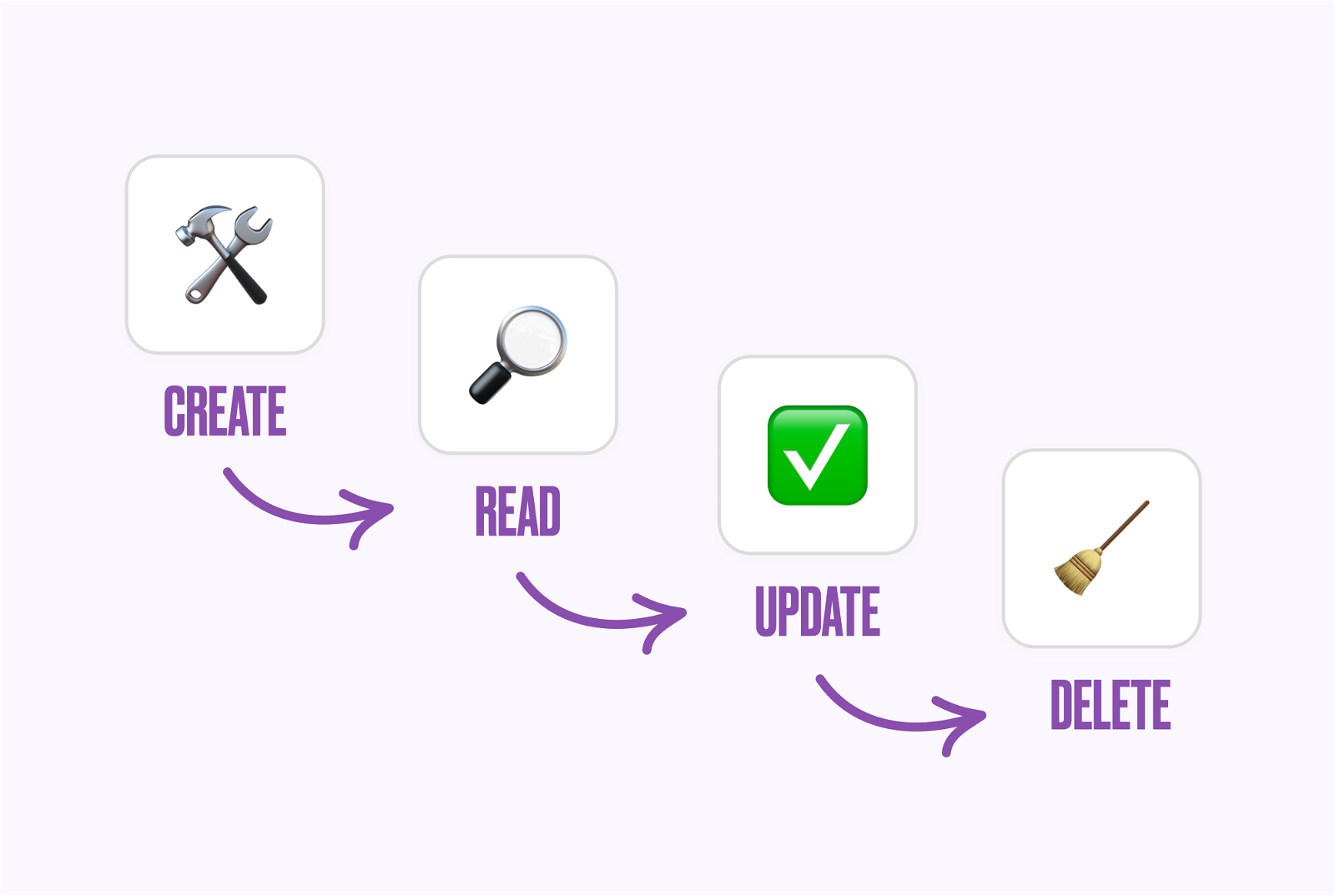No-code 101: CRUD
This is an acronym you need in your life.
Table of Contents
In 15 words or less
The four key actions that an app can do to your database.
In a few more words
If you’ve come this far you’ll hopefully know that apps rely on data. Well, for your app to function and actually perform a basic operation, there are essentially four different things it can do with that data. That’s where the rather sexy acronym CRUD comes in.
- Create. Adding new data to the database – eg, adding a new customer or a new record to a table.
- Read. When you need to pull up information or retrieve data from a database – eg, displaying the details of a customer’s account.
- Update. When you need to change or modify existing data in the database – eg, updating a user’s password or address.
- Delete. As you might have guessed, this is about removing data from the database – eg, removing a record from a table.
Think of the most complex app you can, and at its heart, it’s still only doing one of these four things to the database it’s working from or relating to. Or think about something simple, like an app that manages your to-do list. You’re either adding a new task to complete (create); looking at a task to complete (read); marking a task as done or editing it (update); or deleting a task from your list (delete).
Why do you need to know?
- It’ll help you understand how apps actually work. For you to build your own no-code app, there are some fundamental concepts to understand. This is certainly one of them.
- It’ll help you when it comes to creating your own app. This framework helps you understand how data is actually managed and accessed, and what you’ll be able to ask your app to do. So when you’re designing forms or user interfaces for your app, you’ll be actively thinking about what fields to include to allow for one of those core CRUD functionalities.
- It’ll help you use templates and pre-built components. A lot of the no-code platforms you encounter will come with templates and components that allow you to achieve the functionality you need. Understanding CRUD will make sure you pick the right one. You’ll also be able to troubleshoot more effectively.
Don’t say
‘I’ve been using this app for a while and I’ve got to say, it’s a pile of CRUD.’
Do say
‘I can perform CRUD actions on the data in my database.’
Keep learning


Similar Tutorials
Want to read
more articles
like these?
Become a NoCode Member and get access to our community, discounts and - of course - our latest articles delivered straight to your inbox twice a month!











